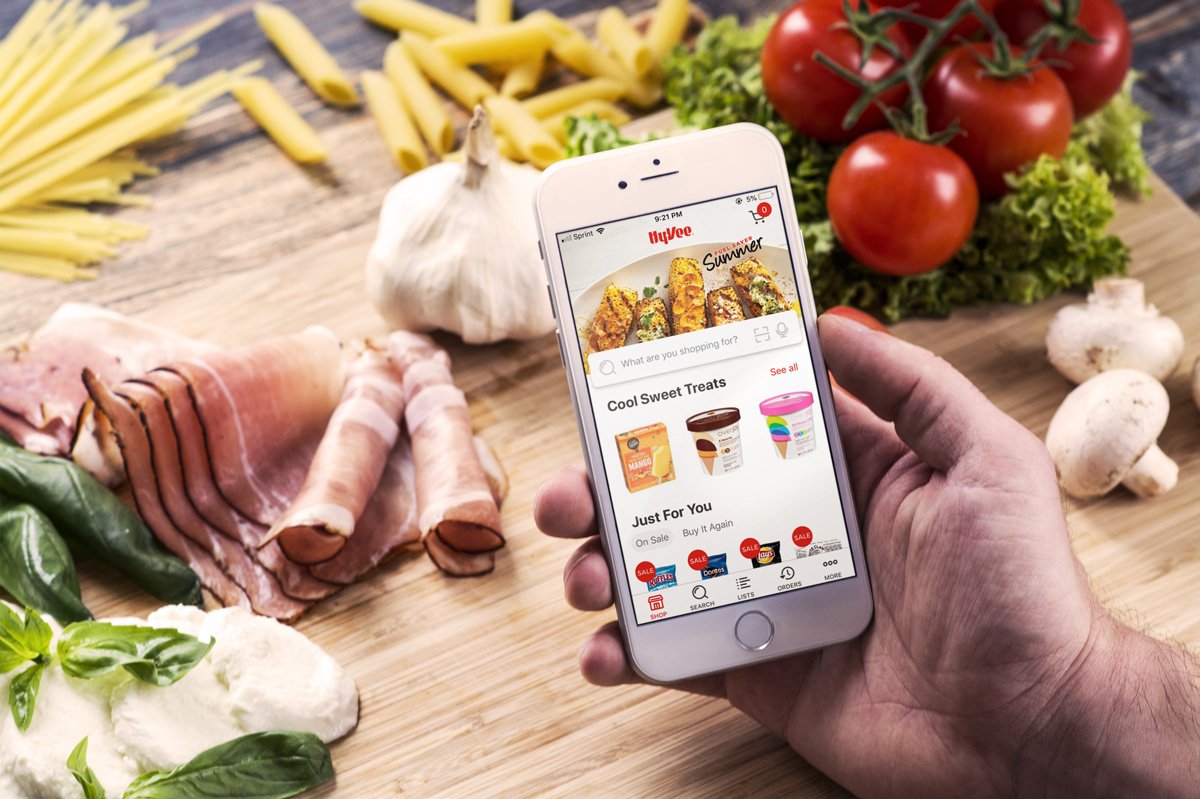Aisles Online Mobile App
We saw continually increasing mobile web traffic on Hy-Vee Aisles Online, but the majority of checkouts still took place on a desktop. We suspected that a native mobile app would better serve our customers through improved usability and by fitting into their busy lifestyles.

Role
As the lone UI/UX designer on the app team, I lead all design activities: user research and testing, wireframing, visual design and content strategy. I collaborated with engineering teammates and senior leadership to drive user-centered outcomes and ensure design fidelity throughout development. I even contributed front-end code (React Native) during the crunch time leading to our public launch.
Process
Existing UX research and customer feedback for Aisles Online pointed to opportunities to significantly reduce users’ cognitive load when shopping on the site. Based on these findings, I centered the app’s design around 1) minimal cognitive load, 2) ease of use and 3) speed to checkout.
We began every new feature or workflow design by articulating a clear, measurable goal for users. I tested wireframes and Sketch prototypes against that goal to arrive at an optimal solution before handing off development work.
Solution
Thanks to extensive user testing and beta user feedback during development, we delivered an app that makes it easy to shop and check out quickly from anywhere. Customers frequently comment that they now shop for groceries while at sporting events, spin class or from their couch.
Challenges
We often faced competing business priorities and user goals while designing the app. One concept allowed users to toggle between different modes of shopping: online vs in-store. While we thought this would help the app serve a greater number of customers, it ultimately proved very confusing and disorienting to users.
Outcomes
Upon release, the app saw very strong organic growth and daily usage. Early app store reviews and customer feedback were largely positive, especially around usability and checkout speed.
“Love the ease of use when it comes to building a list by scanning what is being used at our home, scanning the barcode of what is almost empty, or simply pulling from my recent purchases!”
Reflection
We continually saw the importance of challenging our assumptions through user-centered testing and feedback during the development of the app. While initially difficult given our tight agile cycles, this eventually made our small team much more efficient and drove a clearer roadmap and strategy for the app. It also resulted in better customer outcomes and adoption rates from initial launch.